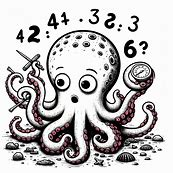Octal Division

The Octal Division Calculator is a simple web-based tool designed to help users divide octal numbers. It allows users to input two octal numbers, namely the dividend and the divisor and calculates the quotient in decimal and octal formats. Additionally, it displays the quotient with the remainder when applicable.
Divide Octal Numbers and Display in Octal and Decimal
| Octal (dividend): | |||
| Octal (divisor): | |||
Results: | |||
|
Calculator
- enter octal number A, the dividend
- enter the octal number B, the divisor
Results
- displays the quotient followed by the remainder, both in octal notation
- the quotient, potentially including a fractional part in octal notation
- the quotient and remainder combined as a decimal value
Octal division, a straightforward process, divides two numbers represented in the octal numeral system, also known as base-8. This system uses digits from 0 to 7 to represent numbers. Like decimal division (base-10), octal division follows the same principles but operates in base-8 instead of base-10.
In octal division, the dividend, divisor, quotient, and remainder are all expressed in octal notation.
Convert both numbers to decimal.
Perform the division in decimal.
Convert the quotient and remainder back to octal.
Convert octal 27 to decimal:
27 octal = (2 x 81) + (7 x 80) = (2 x 8) + (7 x 1) = 16 + 7 = 23 decimal
Convert octal 33 to decimal:
33 octal = (3 x 81) + (3 x 80) = (3 x 8) + (3 x 1) = 24 + 3 = 27 decimal
Perform the division in decimal:
23 ÷ 27 = 0.851851
Convert the result back to octal:
0.851851 in decimal is equal to 0.66411366 in octal.
To find the quotient and remainder when dividing octal 27 by octal 33
Express this fraction as a quotient and remainder:
23 = 27 x 0 + 23
Convert the quotient and remainder back to octal:
Quotient: 0 decimal = 0 octal
Remainder: 23 decimal = 27 octal
In octal division, the dividend, divisor, quotient, and remainder are all expressed in octal notation.
Example Octal Division
Divide octal 27 by octal number 33:
Convert both numbers to decimal.
Perform the division in decimal.
Convert the quotient and remainder back to octal.
Convert octal 27 to decimal:
27 octal = (2 x 81) + (7 x 80) = (2 x 8) + (7 x 1) = 16 + 7 = 23 decimal
Convert octal 33 to decimal:
33 octal = (3 x 81) + (3 x 80) = (3 x 8) + (3 x 1) = 24 + 3 = 27 decimal
Perform the division in decimal:
23 ÷ 27 = 0.851851
Convert the result back to octal:
0.851851 in decimal is equal to 0.66411366 in octal.
Octal 27 divided by octal 33 equals octal 0.66411366.
To find the quotient and remainder when dividing octal 27 by octal 33
Express this fraction as a quotient and remainder:
23 = 27 x 0 + 23
Convert the quotient and remainder back to octal:
Quotient: 0 decimal = 0 octal
Remainder: 23 decimal = 27 octal
Dividing octal 27 by octal 33: Quotient = octal 0 Remainder = octal 27